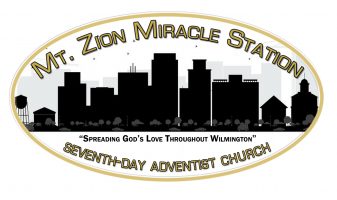Education
Church entities operate schools from kindergarten through university levels for the purpose of transmitting to students the Church’s ideals, beliefs, attitudes, values, habits, and customs. The source, the means, and the aim of Adventist education are a true knowledge of God, fellowship and companionship with Him in study and service, and likeness to Him in character development. 90 CHURCH MANUAL Education Secretary—The church elects an education secretary to promote and generate support for Christian education. The secretary is a member of the Home and School Association executive committee and works in cooperation with the association.
Home and School Association—A church with a school shall establish a Home and School Association, the purpose of which is to provide parent education and unite the home, the school, and the church in endeavors to provide Christian education for the children. Parents of students, school patrons, and church members should be encouraged to be active members of the association. Home and School Association officers shall be a leader, assistant leader, secretary-treasurer, librarian, and the educational secretary. (See p. 179.) To give continuity, some of the officers should be elected for second terms. All shall be members of the church. The leader of the association shall be a member with success in training children, whose mind is open to new ideas, and who believes in the importance of Christian education. The secretary-treasurer keeps the records of the association and reports to the director of the conference education department at the beginning and end of each school year. Association funds are channeled through the church/school treasurer, kept as a separate account, and audited under denominational policy. The principal-if a member of Mount Zion Miracle Station-is an ex officio member of the Home and School Association committee. Church School Board—The administrative body of every elementary (primary) school and junior academy (partial high school) operated by one church shall be a church school board elected by the church or a school committee appointed by the church board. Thus this body may be a separate school board, the church board, or a school committee of the church board appointed for this purpose. Division working policies explain the functions of school boards. School board members should be chosen for their consecration, their belief in and loyalty to the principles of Christian education, their good judgment and tact, their experience in school matters, and their financial judgment and ability. They should believe in and be willing to follow denominational educational policies and recommendations. If two or more churches jointly operate what is known as a multiconstituent school, the administrative body shall be drawn from the constituent churches. One or more members of the school board should be chosen from among the members of the church board, so that the school board may be closely related to the church board. The pastor should be a member of the school board. If the school is operated by more than one church, generally the pastors of the participating churches concerned are members of the board. In junior academies and elementary schools, the principal or head teacher should be a member of the board. Some members of the board may be parents of children attending the school, so the board may profit from parental viewpoints and counsel resulting from close observation and experience. The school board officers shall be a chairperson and a secretary. If the school is operated by one church, the church elects the chairperson. In multiconstituent school boards, additional officers shall include a treasurer, a vice chairperson, and an assistant secretary. At its first meeting after its election, a union school board elects its own chairperson from among its members. In the event that agreement between the churches is not possible, the appointment will be made by the conference board of education or the conference committee. The principal of the school generally is appointed secretary of the board. Any action of a multiconstituent school board that involves the supporting churches in financial obligations must be submitted to their respective boards for approval. Where a separate school board is elected, one of two plans may be followed to establish time of election and term of office: (1) all the members may be elected at the close of the calendar or fiscal year and function for one year; (2) the members of the first board may be chosen for terms of one, two, and three years, respectively, with replacement members being chosen each succeeding year for a term of three years. The purpose of this plan is to have a nucleus of experienced members on the board to ensure a continuity of policy. When a midterm vacancy is filled, the new member serves the remainder of the original term. The school board or school committee should meet at a regular time and place at least once each month during the school year. The school board chairperson calls meetings, presides, sees that the actions of the board are carried out, and countersigns all financial orders issued by the secretary. The chairperson is a member ex officio of the elementary school and junior academy inspection committee, which surveys and evaluates the school and its work. The secretary keeps a permanent record of meetings, issues orders for money to pay accounts or obligations, and carries on correspondence for the board. Where one church operates a school, the work of the treasurer is usually carried by the church treasurer or an assistant church treasurer, who receives tuition and other money, pays out money on the order of the secretary (countersigned by the chairperson), keeps a careful account of all transfers, and at each monthly meeting gives a detailed report to the board. In a multiconstituent board, a treasurer is appointed by the union board.
